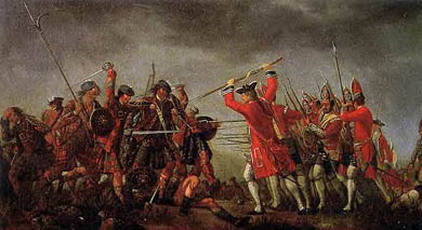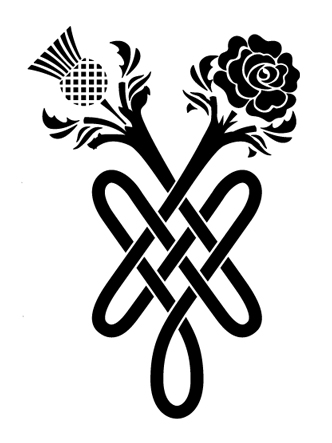
James made an attempt to reclaim his crown in 1689, when he landed in Ireland but his forces were defeated at the Battle of the Boyne in 1690 and he returned to exile in France. James spent the rest of his life at the court of his cousin and sponsor King Louis XIV.
When James II died in 1701, his son, James Francis Edward Stuart, claimed that he was now the rightful king of England, Scotland and Ireland.
After the Hanoverian kings ascended to the throne two major Jacobite rebellions took place in 1715 and 1745 in an attempt to return the crown to the Stuarts.
In 1743 war broke out between England and France. King Louis XV of France supported the Stuart claim and provided the Jacobites with arms and ammunition. The 'Forty-Five' rebellion was led by Charles Edward Stuart (the Young Pretender or Bonnie Prince Charlie).
Many Catholics living in the Scottish highlands were persuaded to join the Prince's cause and the Jacobites started their campaign by capturing Holyrood, the ancient palace of the Scottish royal family. Prince Charles's army then secured an easy victory at the Battle of Prestonpans and, in December 1745, marched into Derby. The Prince hoped that English Catholics would swell his army's ranks, but this was not the case. Then the French king reneged on his promise to provide 12,000 men and the Jacobites were forced to retreat back over the border. they were hotly pursued by the king's forces, led by the Duke of Cumberland.
In April 1746, the Jacobites were defeated at Culloden Moor and Charles himself was forced to flee the scene. Although a reward of £30,000 was offered for his capture, his loyal supporters hid him. The Duke of Cumberland gave the order that there should be 'no quarter' which meant that wounded or fleeing Jacobites were brutally slaughtered.
The reprisals taken by King George II against the Scots were designed to destroy the clan system. Many Jacobites were executed and their land was distributed among those loyal to the king. the wearing of kilts and playing of bagpipes was banned.











 RSS Feed
RSS Feed